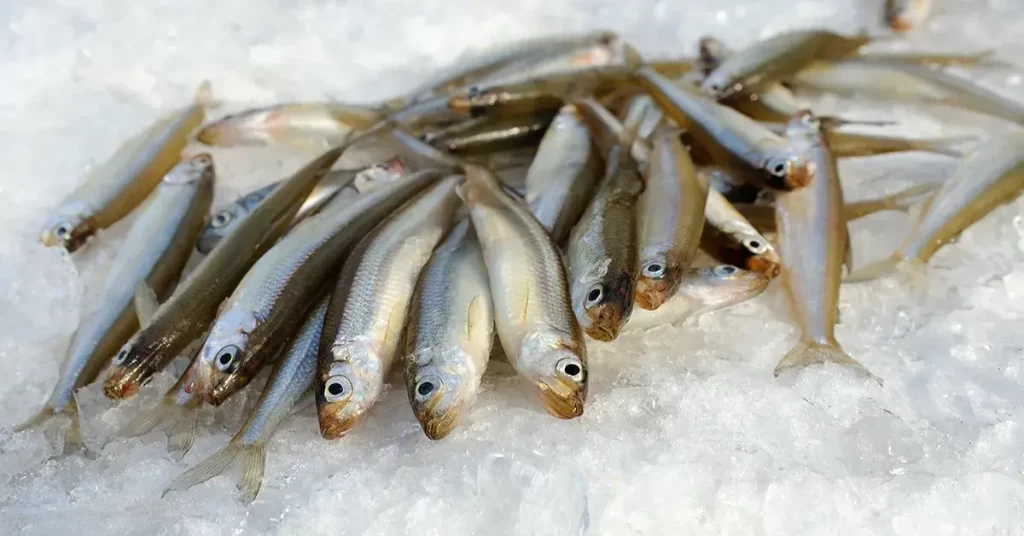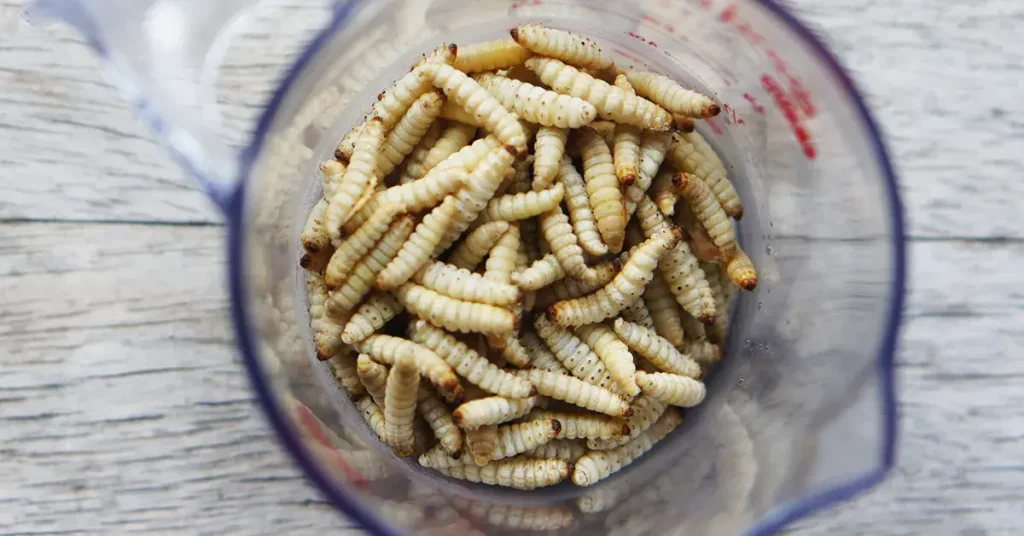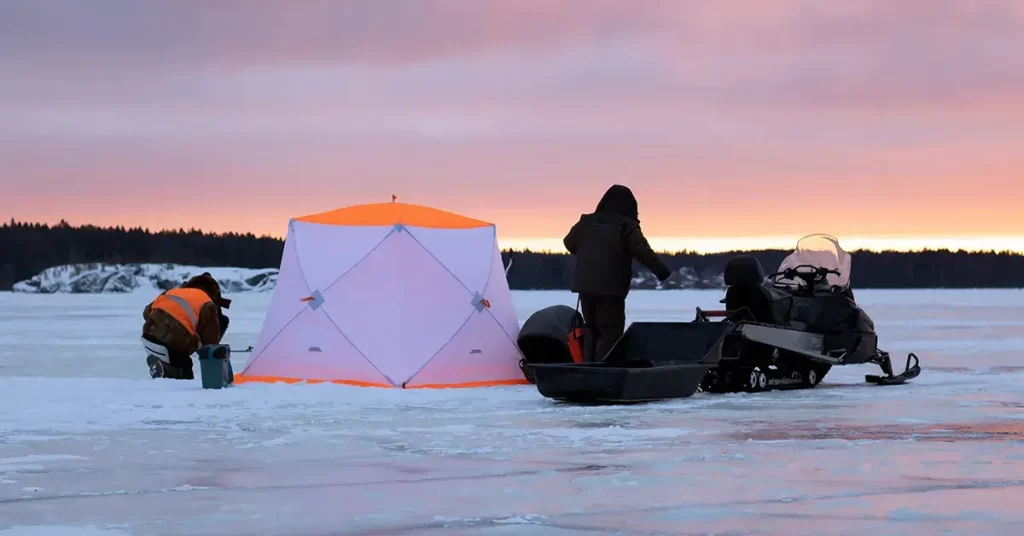I used to fish with wax worms. They’re cheap, can be frozen, and allowed me to catch a wide variety of fish. But then I heard some anglers talk about spikes. But what are spikes for ice fishing? I had to investigate and know what I was missing. So that you don’t miss out too, keep reading and see what I have to share with you about spikes.
What Are Spikes for Ice Fishing?
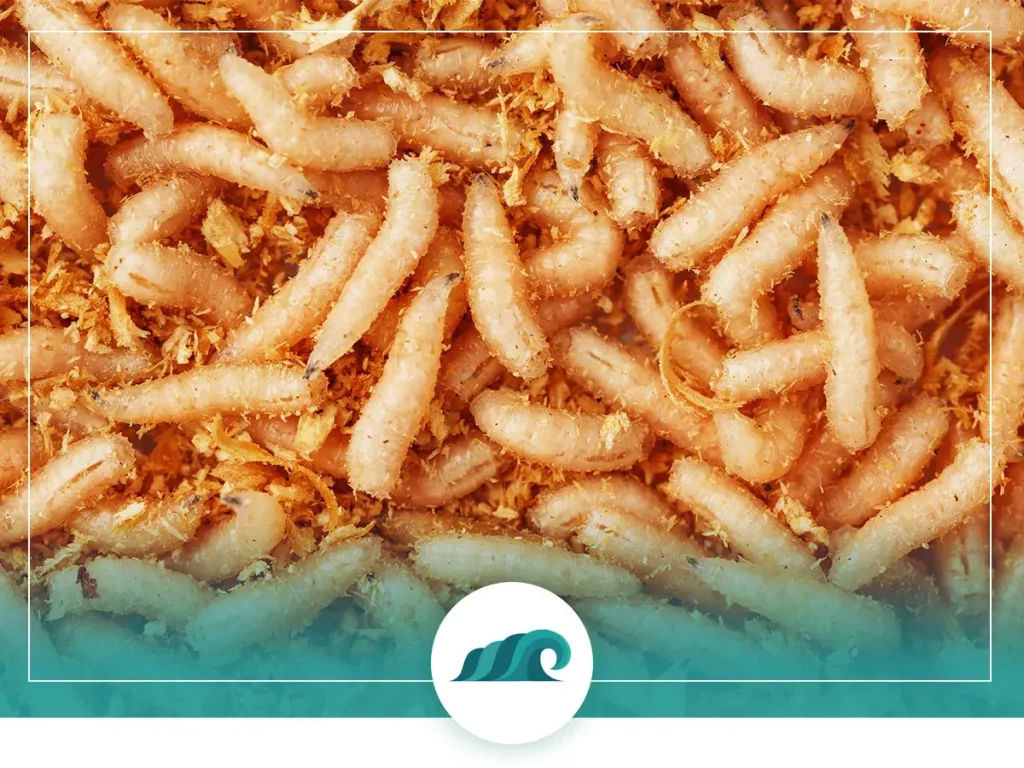
What is a spike for ice fishing? Spikes are the bluebottle fly’s pale larvae. They’re about an eighth of an inch in length, and you can often find them near food sources.
Bluebottle flies typically lay their eggs on decaying meat or feces, and when the eggs hatch, the larvae immediately begin to feed. After that, they undergo three molts before becoming adults; during this time, they can grow up to half an inch in length.
Nevertheless, these larva are excellent baits for ice fishing and can help you catch smaller panfish like sunfish and perch. They are considered an all around favorite.
Bluebottle flies are also pollinators, besides being used as bait for fishing in their larvae stage. Though accidental, bluebottle flies are an alternative to bees in breeding some plants.
What Are Wax worms for Ice Fishing?
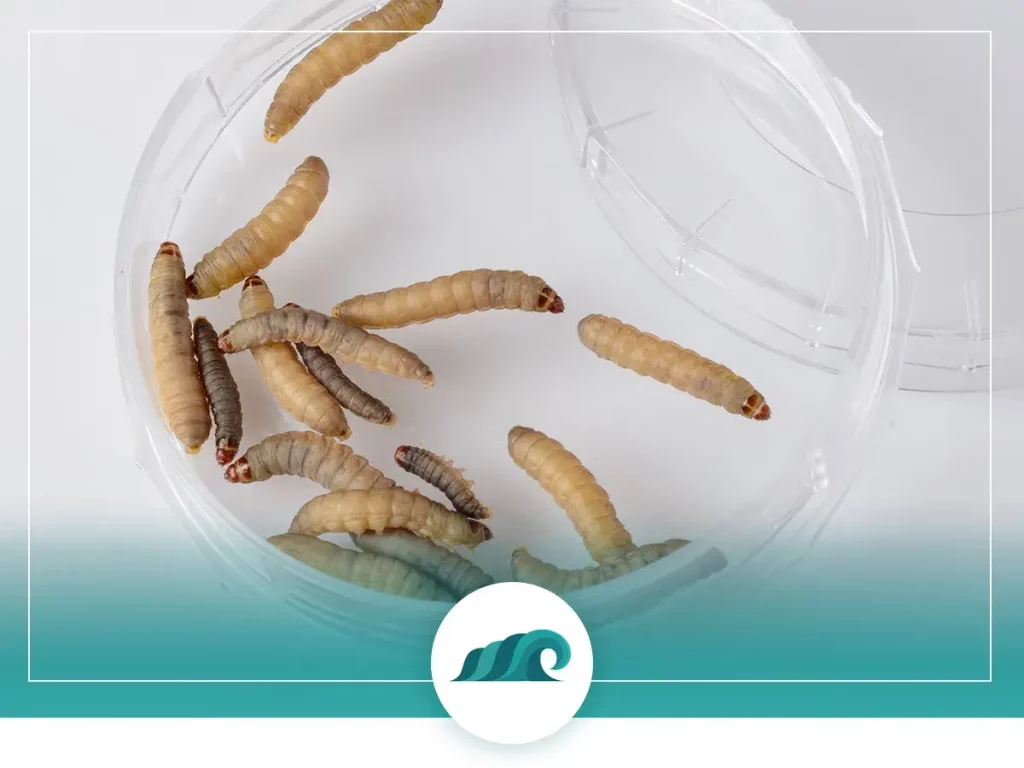
Wax worms are the larvae of the wax moth, which is a species of moth found in many temperate and tropical regions of the world. They are also a very cheap bait and are great at catching various fish, including Northern pike, walleye, and perch.
Another benefit of using wax worms for ice fishing is that they can be frozen so that you can store them for later.
If you decide to use them straight away, you can place them in a bait bucket with water. Putting them in a bucket means you don’t have to return to your car or home to get more bait each time you’re out fishing.
Why Use Spikes for Ice Fishing?
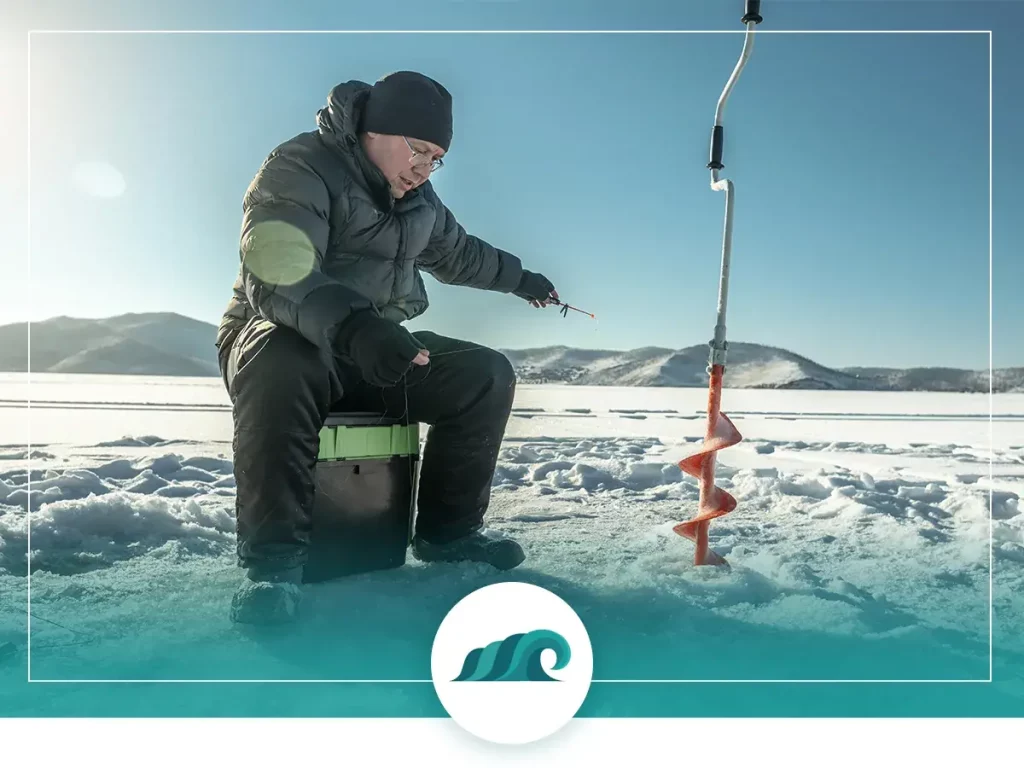
- Many people ask why anglers use spikes for bait, and there are several reasons. First, they are more rigid than other bait options and stay on the hook better.
Staying on the hook better is important because when the fish bite, they often thrash around, trying to escape. If the bait falls off the hook, the fish will get away, and the fisherman will have wasted his time.
- Second, you can use spikes to catch smaller fish. This is advantageous because smaller fish are often easier to clean and cook.
- Finally, spikes are suitable for fishing in freezing waters. This is because they do not freeze as quickly as other types of bait, making them more likely to stay on the hook and catch a fish. For all these reasons, it is clear that spikes are a good choice for ice fishing.
What Temperature Should Spikes Be Stored At?
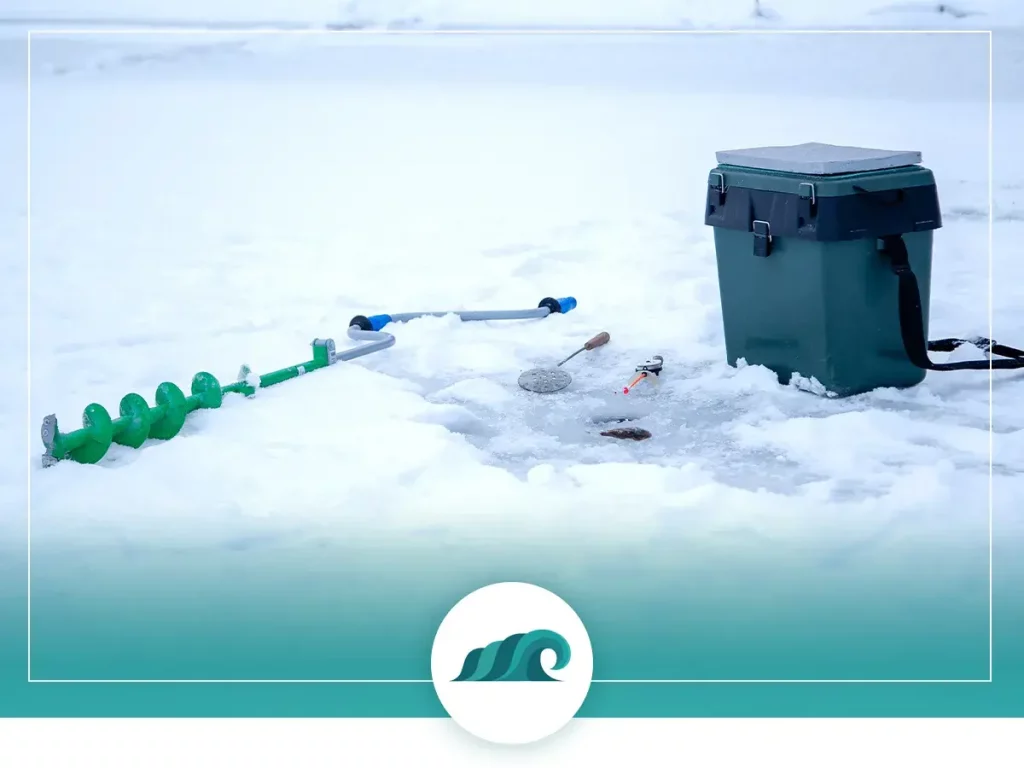
When it comes to ice fishing, bait can be just as important as the equipment. While live bait is always an option, keeping bait alive in cold conditions can be challenging. Many anglers swear by using spikes as bait when they go ice fishing.
These small, wriggling creatures are a favorite snack of many fish. You can store them for long periods without fear of them turning into flies. The key is to keep them at a temperature between 33 and 39 degrees Fahrenheit.
This low temperature will prevent them from maturing into adults and keep them lively enough to tempt even the most finicky fish. So next time you head out for a day on the ice, don’t forget to pack some Spike.
How To Keep Ice Fishing Spikes Alive
Ice fishing spikes are an essential tool for any ice fisherman. They help to keep your line in place and prevent it from drifting away. However, they can quickly become damaged or even die if they are not adequately cared for.
The best way to keep your larva alive is to double-zip them in “zippered” plastic bags. The sealed bags will help to protect them from the elements and prevent them from drying out.
You should also maintain a layer of dry sawdust in the bags, which will absorb moisture and help to keep the spikes healthy. Finally, check the spikes regularly for any signs of damage or death, and remove any that are no longer viable. When you are done using all of the larva from the bags, be sure to throw the bags away in the garbage so they don’t pollute the lake or stream.
How Long Will Spikes Last?
For ice fishermen and women, baiting your hook with spikes is a popular choice. But how long do these spikes last? If kept in the fridge at the right temperature (33-39 degrees), they will last up to five months.
However, when using them as bait, it is vital to keep them alive and cold; otherwise, they will quickly spoil. They have a soft body that is very sensitive to temperature changes, so it is best to use them as bait shortly after you catch them. Your refrigerator door will keep them at the right temperature.
Wax Worms vs. Spikes for Ice Fishing
Ice fishing can be a fun and rewarding experience, but to be successful, you need to use the right bait. Two popular choices are wax worms and spikes, but what’s the difference?
Wax worms are larger than spikes and have a fragile body. Wax worms, dressed on a Swedish Pimple or Kastmaster, can be utilized to catch anything from crappie to panfish to trout. But when hooked on a Rapala Jigging Rap, they can also capture target species like pickerel and walleye.
On the other hand, because of their smaller size, you can only use ice fishing spikes to catch tiny fish with smaller mouths, such as perch.
So, what’s the best choice for you? If you’re targeting larger fish, go with waxworms. On the other hand, spikes might be the way to go if you’re after smaller fish. Either way, you will have a good time out on the ice.
Conclusion
What are spikes for ice fishing? They are larvae of the bluebottle fly. Spikes may be a good option if you want to catch smaller fish. Compared to wax worms, they tend to be more effective when fishing for smaller-mouthed fish. Ensure you store them at the correct temperature, so they do not turn into flies.


